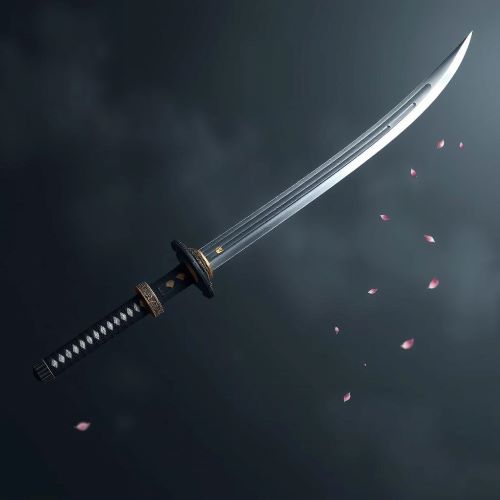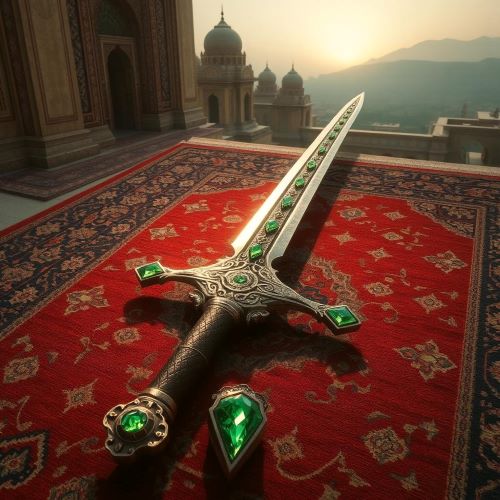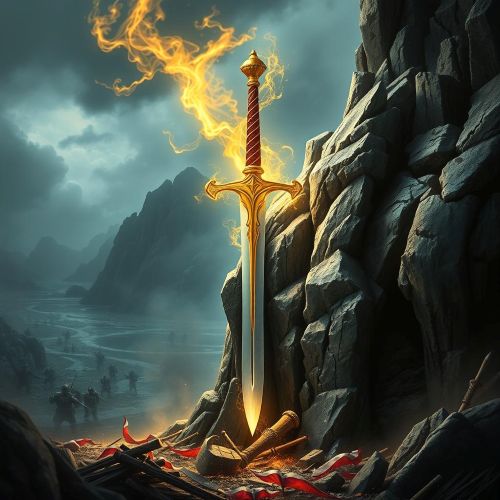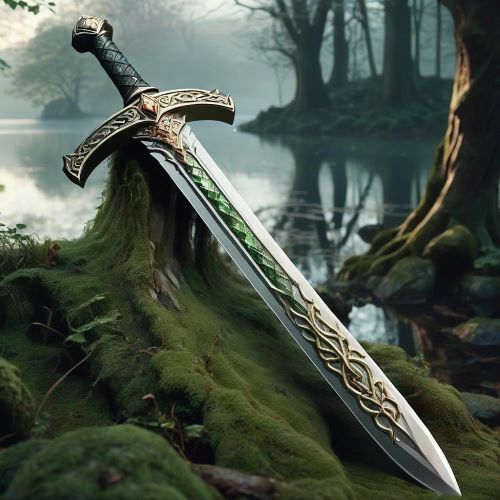Hrunting : The Mythic Sword That Tested Beowulf’s Destiny
Hrunting
Introduction
Hrunting occupies a unique place in Germanic lore as one of the most discussed weapons in the Old English epic Beowulf. More than a sword, it stands as a narrative device that reveals the limits of human craftsmanship, the bonds between warriors, and the moral complexities woven into heroic tradition. Although it fails at a decisive moment, Hrunting’s reputation and symbolism continue to captivate scholars, storytellers, and readers who explore the layered meanings of objects in early medieval literature. Its name echoes through time as both a tribute to legendary weapon-making and an enduring reminder that even the most trusted tools are ultimately shaped by fate.
Origins
The origins of Hrunting lie entirely within the Beowulf manuscript, composed between the eighth and eleventh centuries. Introduced when the Danish warrior Unferth entrusts it to Beowulf, the sword is portrayed as an heirloom associated with formidable deeds long before the hero touches it. The poem describes it as ancient, patterned with dark, winding designs, and “tempered in blood,” suggesting a history full of violent triumphs. Scholars debate the meaning of its name, with interpretations ranging from “to thrust” to “to pierce,” both reinforcing its aggressive role. The sword’s existence in the story reflects the Germanic cultural practice of imbuing weapons with lineage and identity, transforming them into objects that hold social memory.
Think you know your myths and legends? Dive into the world of ancient stories and test your knowledge with our engaging quizzes on Mythlok!
Powers
Hrunting’s powers are established through the poem’s insistence on its past successes. It is said to have never failed anyone in battle prior to its use by Beowulf, granting it the aura of an undefeatable weapon forged for heroic exploits. Its pattern-welded construction, typical of elite early medieval blades, conveys strength, durability, and an almost supernatural resilience. The sword’s reputation as a battle-hardened tool strengthens the sense that it carries more than physical might; it represents honor, trust, and the legacy of warriors who once wielded it. Yet its greatest narrative power emerges when it falters, revealing that even the strongest forged steel cannot overcome every force—especially when confronting creatures that belong entirely to the supernatural realm.
Owners/Users
Unferth is the first named owner of Hrunting, and his role is deeply tied to the weapon’s significance. After questioning Beowulf’s reputation earlier in the poem, Unferth’s decision to relinquish the sword is widely interpreted as a gesture of respect, even submission, acknowledging Beowulf’s superiority. This act also suggests a deeper commentary on loyalty and redemption within warrior culture. When Beowulf accepts Hrunting, he does so not simply for its power but for the meaning behind the offering. Though Beowulf does not use the sword after its failure, he treats it with the dignity befitting a valued heirloom, returning it to Unferth without criticism. The exchange reveals the complex interplay between honor, reputation, and the moral weight carried by those who possess powerful weapons.
Instances used
The defining episode involving Hrunting occurs during Beowulf’s descent into the mere to confront Grendel’s mother. In this battle, the sword encounters forces beyond human understanding. When Beowulf attempts to strike the fearsome creature, Hrunting cannot cut through her enchanted skin. Its failure is sudden and absolute, described in the text as the moment its famed powers “proved ineffective.” Beowulf casts it aside and ultimately relies on his own strength and a massive giant-forged sword found within the lair to win the fight. The moment marks a turning point in the poem, bridging the gap between human achievement and the intervention of fate or divine will.
Source
Heaney, S. (Trans.). (2000). Beowulf: A new verse translation. W. W. Norton & Company.
Brown, C. (2015). Swords as Objects and Actors in Beowulf. Journal of Anglo-Saxon Studies.
“Hrunting.” (2003). In Wikipedia. Retrieved November 27, 2025, from https://en.wikipedia.org/wiki/Hrunting
“Beowulf and the Hrunting Sword.” (2024). PapersOwl.com. Retrieved November 27, 2025, from https://papersowl.com/examples/beowulf-and-the-hrunting-sword/
Typemoon Wiki. (2024). Hrunting. Retrieved November 27, 2025, from https://typemoon.fandom.com/wiki/Hrunting
Frequently Asked Questions
What is Hrunting in Beowulf?
Hrunting is the ancient sword given to Beowulf by Unferth before he battles Grendel’s mother. It is renowned for its past successes but famously fails during the fight.
Why did Hrunting fail against Grendel’s mother?
The poem suggests that her supernatural protection rendered ordinary weapons ineffective, highlighting the limits of human tools in battles against otherworldly forces.
Who originally owned Hrunting?
Hrunting belonged to Unferth, a Danish warrior who lends it to Beowulf as a gesture of respect and reconciliation.
Is Hrunting a magical sword?
While Hrunting is described as powerful and tempered in blood, it is not magically enchanted in the way the giant’s sword in the mere is. Its reputation comes from its battle history.
What does Hrunting symbolize?
Hrunting symbolizes warrior loyalty, the burden of reputation, and the limitations of human craftsmanship when facing supernatural evil.








